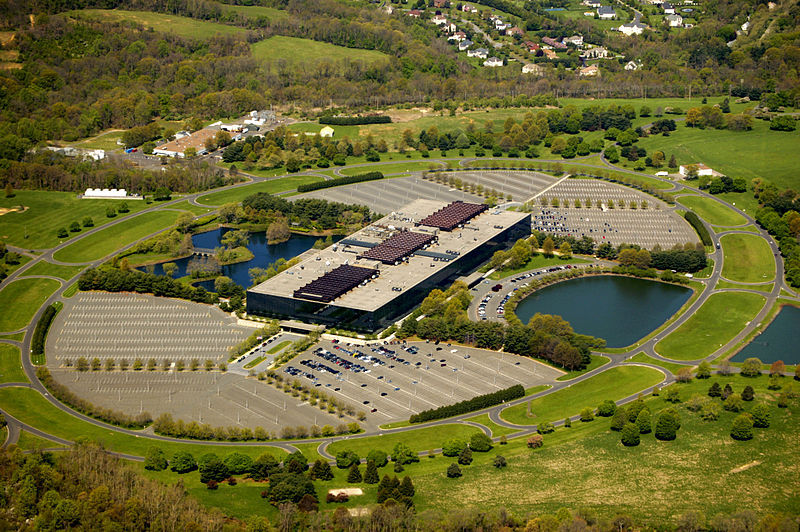The historic old Bell Labs building in Holmdel, New Jersey, is being converted into a “metroburb,” a giant, indoor “Main Street” that will house stores, a food hall, and technology company offices.
In 2007, Alcatel-Lucent, the company that had taken over Bell Labs from AT&T, shut down operations at the 460-acre site. The question of what to do with the property within the wealthy suburban community lingered for years, after one plan to demolish the building to build housing was shot down. That’s because the Eero Saarinen-designed structure, once described as the “biggest mirror ever,” was listed in the National Register of Historic Places, and demolition became unthinkable.
There were no takers for the 2 million sf structure until Ralph Zucker, and his development company, Somerset Development, conceived of the repurposing of the structure into a mixed-use property. It took five years for the town to grant final approval for the purchase, and to have the building rezoned as mixed-use.
There was initial resistance to the plan, but the town has largely embraced the development in the intervening years. The project could become an exemplar for other communities who have giant former corporate headquarters that have outlived their original purpose.
Related Stories
| Sep 1, 2011
Project Aims to Automate Code Compliance Assessment
FIATECH, a consortium of owners from the industrial, power, and retail markets that build large structures, launched a project this year to validate the use of automation technology for code compliance assessment, and to accelerate the regulatory approval process using building models. Long-term objectives include the development of an extensive, open-source rule set library that is approved by industry and regulatory bodies for use by technology developers and code officials.
| Sep 1, 2011
EPA Says Additional Lead Paint Cleaning Rules Not Necessary
The EPA has concluded that current Lead: Renovation, Repair, and Painting Program (LRRP) cleaning requirements and lead-safe work regulations are sufficient to protect the public from lead dust hazards. “Our members have been instrumental in contacting legislators to detail the detrimental impact of the current LRRP," says Richard Walker, American Architectural Manufacturers Association’s president and CEO. “This collective industry voice has prompted the EPA to make the responsible decision to refrain from adding further, unnecessary costs to homeowners under the current economic climate."http://www.aamanet.org/news/1/10/0/all/603/aama-commends-its-members-congress-for-vacating-lrrp-clearance-rule
| Aug 11, 2010
Best AEC Firms of 2011/12
Later this year, we will launch Best AEC Firms 2012. We’re looking for firms that create truly positive workplaces for their AEC professionals and support staff. Keep an eye on this page for entry information. +







